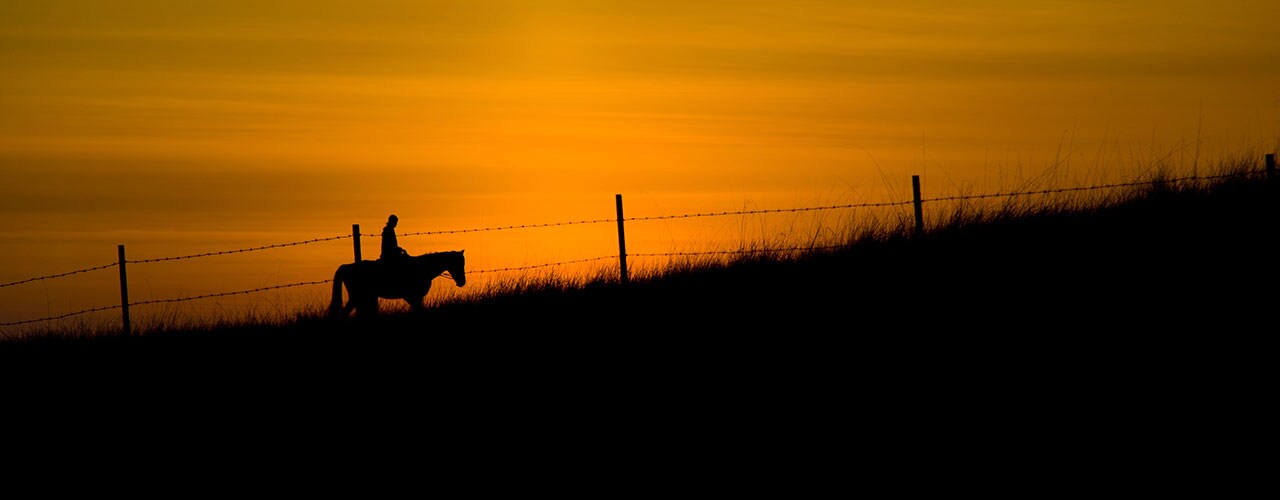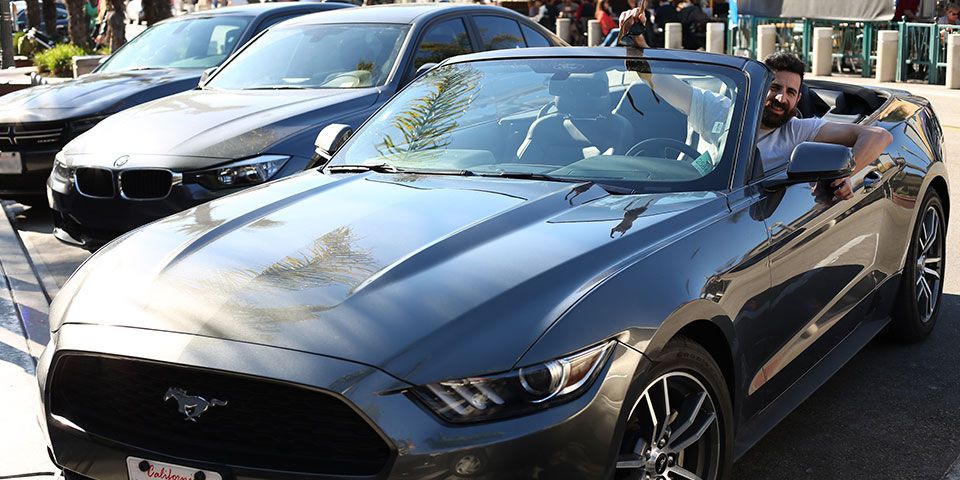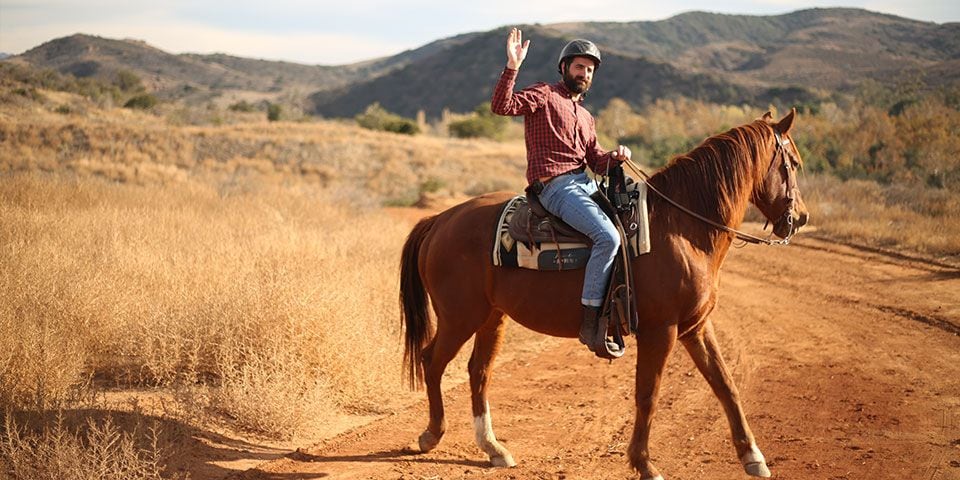The Last Cowboys: Whip cracking away on the open range in Southern California
My cowboy day started early. Firing up a Ford Mustang, I zoomed away from the veneered smiles and wrinkle-free foreheads at Orange County and past the anodyne Anaheim hotels that service the conveyor belt of Disneyland vacationers.

I was heading out in to the wide open heartlands of Irvine in Southern California. Here I was to live out my childhood dream — to hang out with cowboys and have a go at doing their thing.
It’s a different universe as the cities melt away and my sturdy American car rose silently into the mountains. The heady smell of diesel fumes and oily chips — sorry, French fries — is soon replaced with the smoky tones of cedar wood and a lovely, lingering pollen. I spot a fat woodpecker swoop down to take a closer look at the huge car. This is the great outdoors and unchanged for generations. And it’s not hard to imagine why cowboys were so keen to settle the Old West way back when.
Always mount from the left
I wince down at my skinny jeans and hob-nailed boots and instantly feel I should have the word INTERLOPER scorched on my backside.
I was greeted by my guide Melisa on the ranch’s gravel-strewn driveway. She’s not how I pictured a cowgirl. Six foot, broad shouldered and teeth like pearls. I thanked her for training me up. “Oh I’m not a trainer, David,” she gently chastised, “I’m a wrangler here. You’ve got to get that right.”
We trudged over grass torched brown by a relentless West Coast sun. I notice the farm’s other wranglers dressed like my teacher — boot cut denims, big belt buckles, checked shirts. And finished with pin-sharp spurs. I’m going to be shown the fine art of horsemanship and even how to rope correctly using a lariat. I feel entirely out of place. I wince down at my skinny jeans and hob-nailed boots and instantly feel I should have the word INTERLOPER scorched on my backside with a white-hot branding iron.
I’ve been fascinated with cowboys as far back as I can remember. I used to spend rainy Sundays as a kid watching "Stagecoach," transfixed as the cowboys in stetsons shot rifles at indians with painted faces under feather headdresses. Clint Eastwood, John Wayne, Roy Rogers. These were tough men not afraid to fight to protect their horses and gals. I’m a kid from the London suburbs who rode ponies half a dozen times growing up. But I still felt an affinity with that message.
My guide teaches me some tips — how to swing into a Western saddle (always get on the horse from the left) and how to control the reins using a single hand. Initially, the beast stubbornly ignores my commands, but it is exhilarating when I connect with my animal and it starts following my commands. After some roping practice with the farmhand — I missed lassoing the target 10 times in a row — I head for the shade and catch up with my trainer.
Melisa seems young, in her 20s or 30s. She tells me she is part of a growing community of modern cowboys turning their backs on the bigger cities for a more outdoor and back-to-nature life. She tells me how the role has changed with the growth of technology. “You’re not spending so long out on the ranch,” she spells out. “We get to go home more often. And we do less branding! It’s a great life really.”
A day in the life of a cowboy
We’re still working the land. Ideally I’m up in the morning before daylight drinking a strong coffee and watching the sun come up.
My lesson up, I thank my wrangler for her time and jumped back in the Mustang. I take off the roof and make back for my lodgings near Newport Beach. The afternoon temperatures have rocketed in to the 30s, and soon I’m wiping beads of salty sweat out of my eyes and beard. The traffic is hell and I’m stuck on the 405 highway for two hours and I need a distraction. I have been sent the number of another cowboy that would be interested to talk to me. So I make a call to that most famous of Stetson states — Texas.
Don Hutson is from the old cowboy school. He is in his late 60s and lives and works out of Houston. He’s got a tanned, weather-beaten face crowned by wisps of silver hair. Don’s a good ol’ boy, no doubt. I start by asking him if he would classify himself as a cowboy. “Yes, sir!” he beams. I tell him how I got interested in the culture, and he instantly pours scorn on any lingering cowboys versus indians face-off. “The old Western idea is completely false,” he assures me in his southern drawl. “You have to remember cowboys and indians worked together.
“Real cowboys were not genocidal. It was partnering with indians. Conservation was big for Native Americans and cowboys understood this. Ideas were shared. And that philosophy remains the same now.”
I question him. That idea sounds almost socialist. Not a word that I’d imagine would go down too well in Texas. “You’re right. It was almost a commune-style way of living. If I grew potatoes and my neighbour grew corn, we depended upon each other, helped each other.” And does that philosophy still exist? He laughs. “This was years ago. I don’t even know my neighbour's name any more. Not even 15 feet away from my front door!”
So what about the typical Day In The Life of a modern cowboy. “We’re still working the land. Ideally, I’m up in the morning before daylight drinking a strong coffee and watching the sun come up. Then I’m working the horses. Teaching others what I know about cows or roping,” Don says, impassively. “Importantly, I’m passing my knowledge on to the next generation. Then at 5 p.m., I’ll take of my boots and have a nice scotch.” He adds chuckling: “You know what, David, I did a distillery tour in Scotland and now I prefer single malt to bourbon! That’s a bit controversial round here!”
He’s passionate about the way of life. But what about the explosion in GPS, Wi-Fi and smartphones? Surely the idea of a tech savvy horseman must be a contradiction for his generation? “Not at all!” he insists. “The cowboy has embraced technology. It’s really helped us. We know where our cows are now. They’re micro-chipped, and we have no issue using apps. It doesn’t mean we can’t still rope the old-fashioned way. And it doesn’t matter if Amazon has started dropping stuff by drone; this is how we do things!”
I could chat with Don for hours, but I’m pulling my purring V8 into the hotel. Just a couple of hours earlier I was under endless blue sky, riding on scorched earth in near silence except for an occasional bird call. Black Eyed Peas is playing in the lobby. I’m back on earth. My relatively short drive showed the contrast between town and country, and I feel a little flat to be back. The Mustang is a beaut to drive, but it’s really not a patch on the thrill of holding the reins of a cantering horse.
I still want to know more about what make a cowboy tick, so later on that day I catch up with another horseman. Van Hargis grew up in northeast Texas working the land with his mother and stepfather. He was even involved in the semi-professional rodeo scene and still rides each day. Like Don, he has an easy Southern affability and is impeccably polite. He has a different spin on why cowboys seem mythologised across America. “God Dang, David! It’s because the appetite for beef is so huge! The demand is so big, and the cowboys have always had a big part in the story. However much tech has changed, the most efficient way of herding cattle is through working with the horse. And no one can do it like the cowboy!
“But cowboy culture is becoming automated now,” he goes on. “I work a 300-acre ranch and I can assure you an animal responds way better to another animal than to a four wheeler. It’s much easier on horseback.”
Learn more about Country Trails Riding School here. One-hour trail lessons costs around £30 per person. Lasso lessons available on request.

